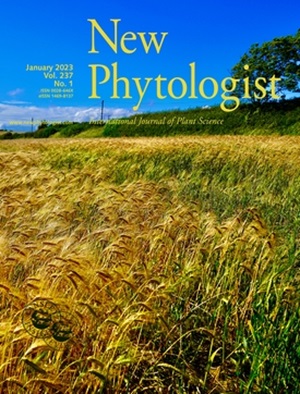Tree drought physiology: critical research questions and strategies for mitigating climate change effects on forests
IF 8.3
1区 生物学
Q1 PLANT SCIENCES
引用次数: 0
Abstract
Droughts of increasing severity and frequency are a primary cause of forest mortality associated with climate change. Yet, fundamental knowledge gaps regarding the complex physiology of trees limit the development of more effective management strategies to mitigate drought effects on forests. Here, we highlight some of the basic research needed to better understand tree drought physiology and how new technologies and interdisciplinary approaches can be used to address them. Our discussion focuses on how trees change wood development to mitigate water stress, hormonal responses to drought, genetic variation underlying adaptive drought phenotypes, how trees ‘remember’ prior stress exposure, and how symbiotic soil microbes affect drought response. Next, we identify opportunities for using research findings to enhance or develop new strategies for managing drought effects on forests, ranging from matching genotypes to environments, to enhancing seedling resilience through nursery treatments, to landscape-scale monitoring and predictions. We conclude with a discussion of the need for co-producing research with land managers and extending research to forests in critical ecological regions beyond the temperate zone.求助全文
约1分钟内获得全文
求助全文
来源期刊

New Phytologist
生物-植物科学
自引率
5.30%
发文量
728
期刊介绍:
New Phytologist is an international electronic journal published 24 times a year. It is owned by the New Phytologist Foundation, a non-profit-making charitable organization dedicated to promoting plant science. The journal publishes excellent, novel, rigorous, and timely research and scholarship in plant science and its applications. The articles cover topics in five sections: Physiology & Development, Environment, Interaction, Evolution, and Transformative Plant Biotechnology. These sections encompass intracellular processes, global environmental change, and encourage cross-disciplinary approaches. The journal recognizes the use of techniques from molecular and cell biology, functional genomics, modeling, and system-based approaches in plant science. Abstracting and Indexing Information for New Phytologist includes Academic Search, AgBiotech News & Information, Agroforestry Abstracts, Biochemistry & Biophysics Citation Index, Botanical Pesticides, CAB Abstracts®, Environment Index, Global Health, and Plant Breeding Abstracts, and others.
 求助内容:
求助内容: 应助结果提醒方式:
应助结果提醒方式:


